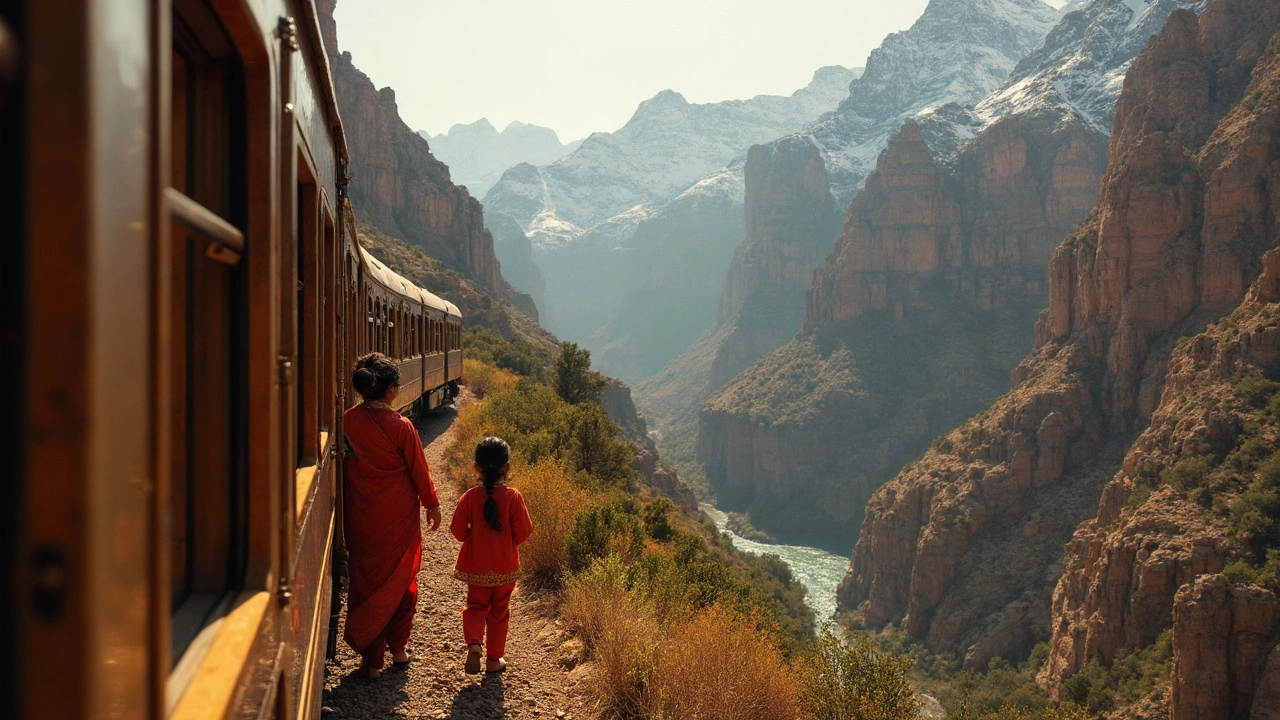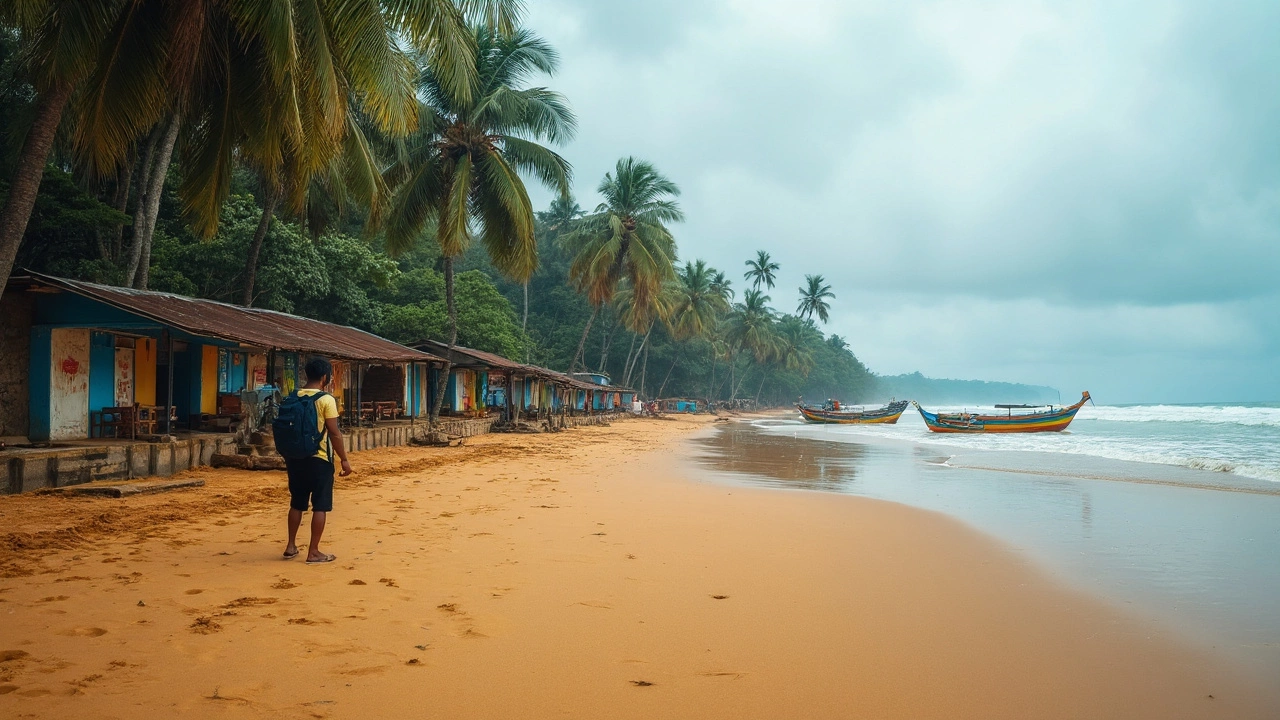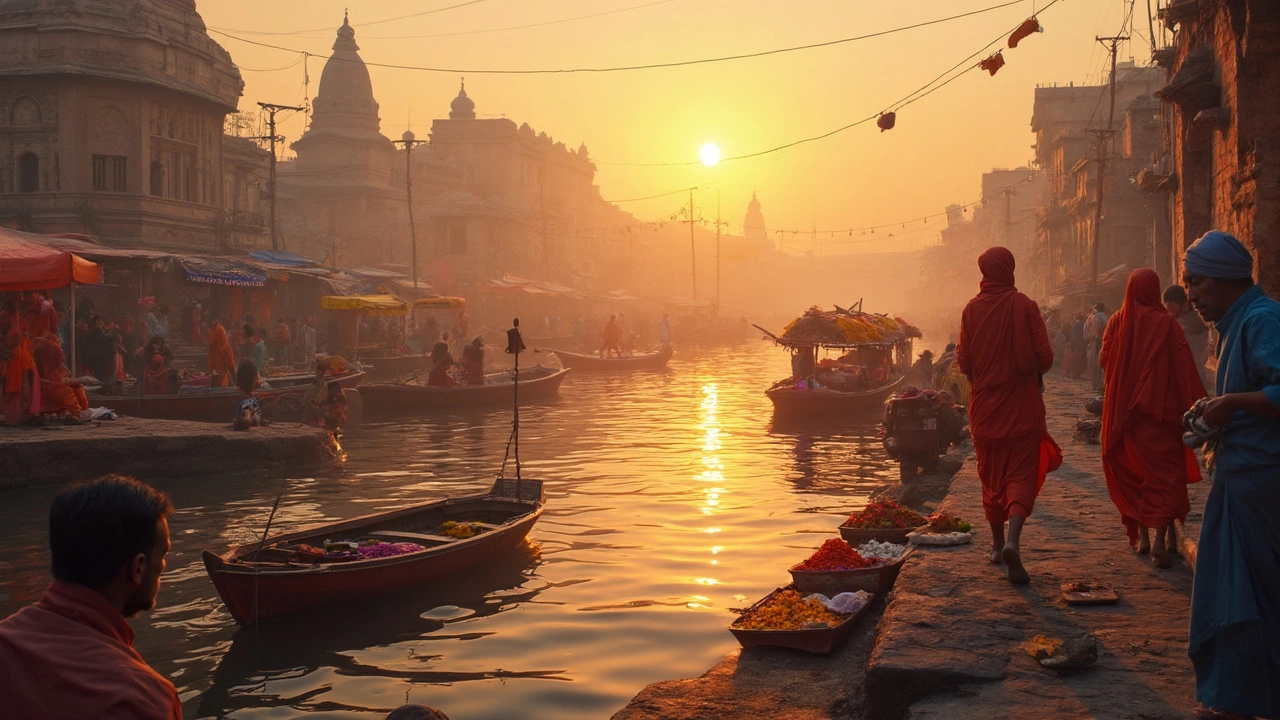Best Asian Beaches: Top Destinations to Visit
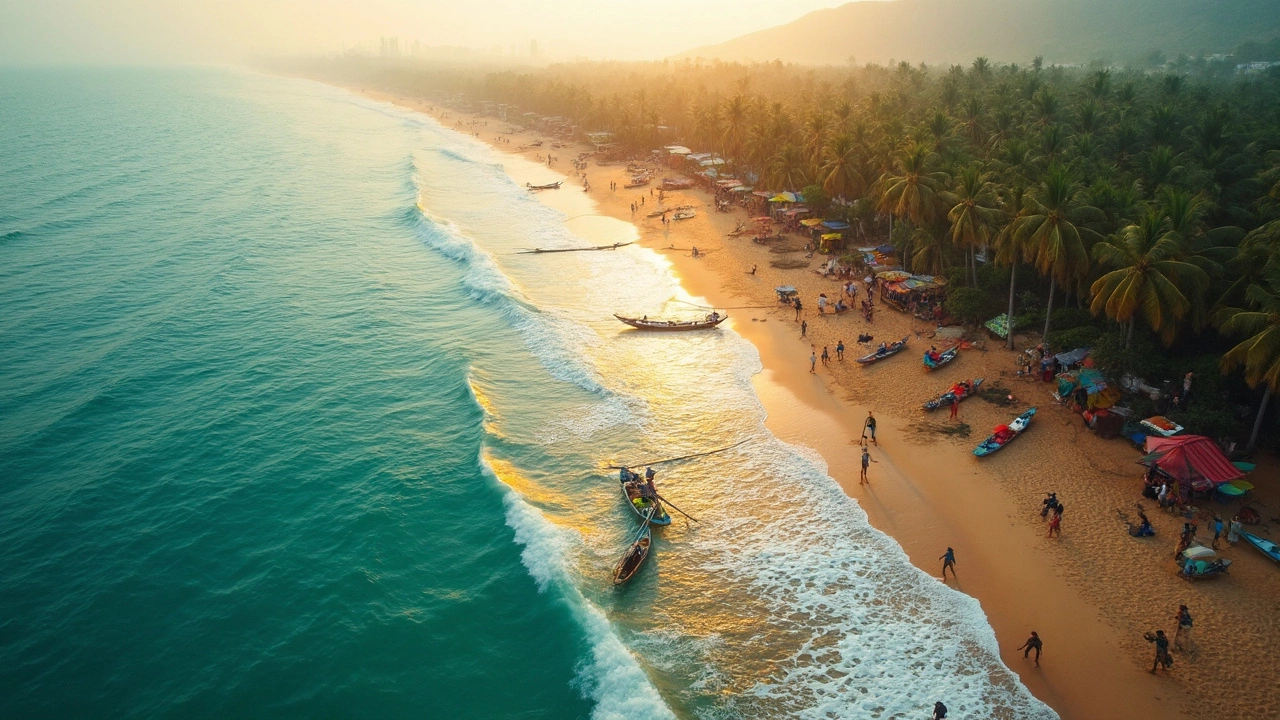
Everyone talks about stunning beaches in Asia, but few people agree on which country actually leads the pack. If you’ve ever scrolled through Instagram, you probably saw powdery islands in Thailand, private overwaters in the Maldives, or Bali's wild surf. But would you guess that Indian beaches have started catching travelers off guard?
Before you book tickets or worry about packing sunscreen, it’s worth knowing what really makes a beach “beautiful.” Sure, clear water and soft sand help, but there’s more to it — like calm for swimmers, easy food options, lively beach life, and clean, friendly vibes. You want pictures that actually match reality, not just clever filters.
That’s why we’re not just naming famous places and moving on. Instead, let’s look at what sets Asian beaches apart, and why India is grabbing more attention lately, even from folks who usually fly straight to Southeast Asia or the Pacific. Think Goa’s sunset parties, untouched Andaman islands, or those secret, crowd-free beaches you don’t see in travel brochures.
- What Makes a Beach Stand Out?
- Contenders: Asia’s Most Stunning Beach Countries
- Why Indian Beaches Deserve the Hype
- Real-World Tips for Your Beach Adventure
What Makes a Beach Stand Out?
If you ask ten travelers to name their dream beach, you’ll get ten different answers. Still, there are a few things almost everyone looks for—clean water, soft sand, and enough space to actually enjoy the view. But let’s get a bit more specific about what really matters.
- Clear water and good swimming: You want to see your toes when you’re wading in, right? Crystal-clear water usually means fewer health worries and better swimming or snorkeling.
- Sand that feels good: Fine white or golden sand—not the gritty stuff that gets everywhere. Think of popular Asian spots like White Beach in Boracay or Palolem in Goa.
- Cleanliness: No one likes trash in paradise. The best beaches tend to have regular clean-ups, with locals and tourists both pitching in.
- Not too crowded: Even if a beach is Instagram famous, it’s way less fun if you can’t find a spot to sit. Off-peak season or lesser-known spots usually win here.
- Easy access to food and shade: Forgetting lunch or getting fried by the sun ruins even a beautiful day. Beaches with small cafes or shacks (think Goa’s beach shacks or Thailand’s food stalls) make life easier.
- Natural beauty all around: Mountains, palm trees, or cliffs right by the water add to the escape-from-everything feeling. That’s why beaches in the Andaman Islands or the Similan Islands look so stunning in photos.
One overlooked thing: safety. Calm water matters if you’re swimming with kids or not a strong swimmer. Some beaches have lifeguards or warning flags, especially at top Asia spots like Phuket or India’s Kovalam Beach.
Local culture and laid-back vibes also go a long way. Friendly locals, some beach games, maybe even a sunset music jam—these turn a regular shore day into a memory you’ll want to repeat.
Contenders: Asia’s Most Stunning Beach Countries
Asia covers a lot of ground, so picking the best beach spots gets tricky. Still, a few countries stick out in every travel guide and beach forum. Here’s a quick look at the heavy hitters, what makes them cool, and a few facts you probably didn’t know.
- Thailand: The first country most travelers picture when talking about Asian beaches. Places like Phuket, Koh Samui, and Krabi are famous for their turquoise water, wild parties, and cheap accommodation. Thailand stays in the lead for easy travel: over 40 million tourists visited in 2019, and beach spots are set up for all budgets.
- The Maldives: Think private islands, crystal-clear sea, and those floating bungalows. The Maldives runs on luxury, and over 1,200 islands cater to honeymooners and celebrities. If you want pure relaxation with no crowds, this is your spot—but you’ll need deep pockets (average hotel cost: $330+ per night according to 2024 travel agency data).
- Indonesia (mainly Bali): Bali draws surfers, digital nomads, and wellness fans. The vibe is chill but lively, and you’ll find black sand, hidden coves, and trendy beach clubs. It gets busy, though—over 6 million international arrivals in 2023 alone.
- Philippines: With over 7,600 islands, the Philippines is a mix of party beaches, empty white-sand strips, and incredible snorkeling. Boracay came back strong after its clean-up; Palawan’s lagoons and El Nido's cliffs are favorites for backpackers and anyone who loves adventure.
- India: Most folks know about the party scenes in Goa, but they miss out on the raw beauty of the Andaman & Nicobar Islands or Kerala’s chill coast. The good news? These places have started popping up in top-10 international travel rankings, with the Andamans nabbing the number 8 spot in Lonely Planet’s 2024 “Best in Asia” guide.
Let’s get concrete. Here’s a side-by-side look at how these countries stack up:
| Country | No. of Islands | Tourist Arrivals (2023) | Beach Highlights |
|---|---|---|---|
| Thailand | ~1,430 | 28.1 million | Phuket, Krabi, Koh Phi Phi |
| Maldives | 1,192 | 1.8 million | Private island resorts, diving |
| Indonesia | 17,508 | 11.7 million | Bali, Lombok, Gili Islands |
| Philippines | 7,641 | 5.4 million | Boracay, Palawan, Siargao |
| India | Over 1,200 (incl. Andaman/Nicobar, Lakshadweep, etc.) | 17.9 million (intl.) | Goa, Andaman, Kerala, Gokarna |
So, while the Asian beach scene is stacked, each country brings its own flavor. If you’re after luxury, you might lean Maldives. If you want party islands, Thailand or the Philippines is an easy pick. But if you want variety—party, calm, adventure, and some surprises—India is right there in the mix, and usually way less crowded outside the Goa hotspots.
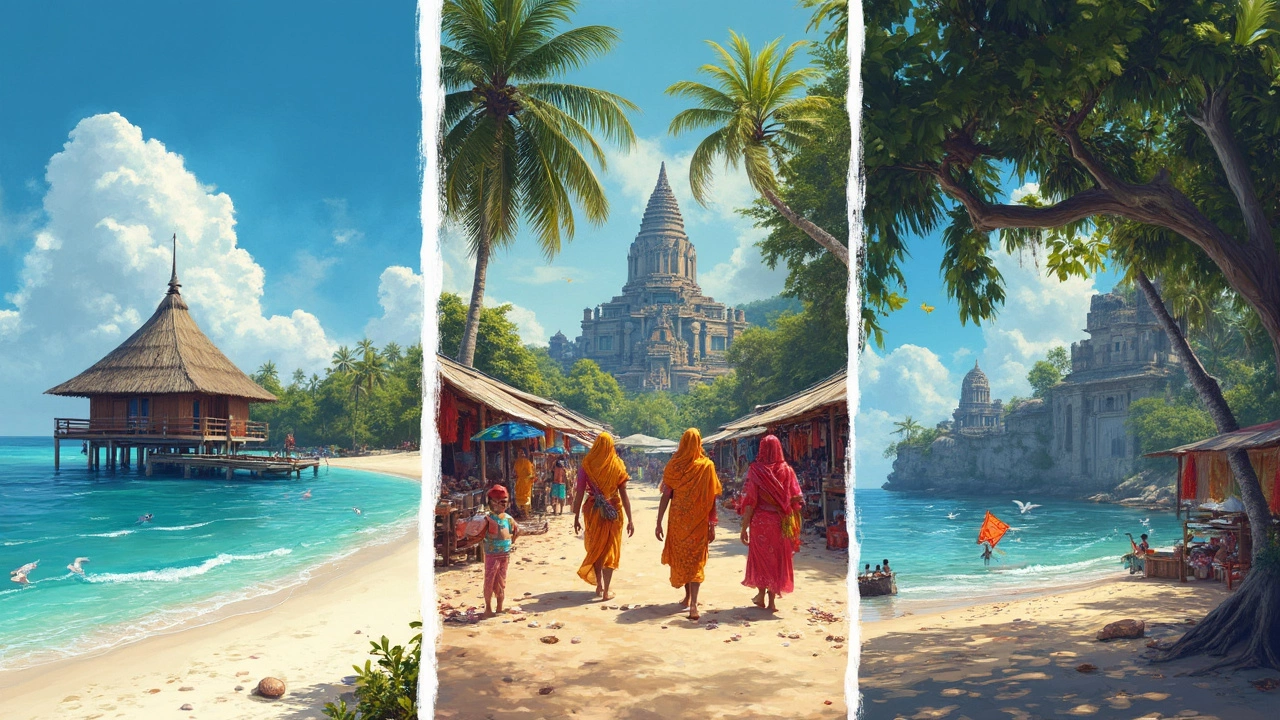
Why Indian Beaches Deserve the Hype
If you only know India for its temples and curry, you’ve been missing out. Indian beaches are the real deal—no joke. With a coastline that stretches over 7,500 kilometers, India is packed with options, from epic party scenes to quiet, untouched shores. Goa steals the spotlight with its all-night parties, but there’s way more happening than just rave beaches.
The India beaches scene has exploded lately because travelers want more than just crowds. For starters, the Andaman and Nicobar Islands offer crazy-clear water and white sand that easily rival Thailand. Radhanagar Beach on Havelock Island keeps getting voted one of Asia’s top 10 beaches—TripAdvisor named it the continent’s best beach in 2023. There’s snorkeling, scuba, and peaceful spots where you won’t see another tourist for hours.
Then you’ve got Kerala’s beaches. Varkala sits on a cliff overlooking the Arabian Sea, with chill cafes and sunset yoga. It’s nothing like the madness of Goa, but you still get palm trees, warm water, and decent surf. Gokarna, tucked away in Karnataka, is another hidden gem. It’s a bit like what Goa was twenty years ago—dugout canoes, tiny hippie shacks, and a laid-back vibe that pulls in backpackers and families.
If you want numbers, check this out:
| Beach | Famous For | Average Water Temp (°C) | Crowd Level (1 lowest, 5 highest) |
|---|---|---|---|
| Radhanagar (Andaman) | Soft white sand, turquoise water | 28 | 2 |
| Baga (Goa) | Nightlife, water sports | 27 | 5 |
| Varkala (Kerala) | Cliffs, yoga, cafes | 28 | 3 |
| Om Beach (Gokarna) | Laid-back crowd, clean sand | 27 | 2 |
Here are a few tips to make your Indian beach trip better:
- Go for the offbeat places—Andaman, Gokarna, and Kovalam don’t see the crazy amounts of tourists that Goa does.
- Monsoon season (June to September) can make things wet, but prices drop low and beaches feel empty. October to March is best for swimming and sunbathing.
- Some Indian beaches, especially in the Andamans, have rules about plastic use. Pack reusable bottles and bags to help keep them clean.
The best part? Indian beaches can fit any budget. Stay in a luxury resort, or crash in a beach hut for a few bucks a night. So whether you want wild parties, private coves, epic sunsets, or just endless sand, India’s got something for everyone.
Real-World Tips for Your Beach Adventure
So you’re finally heading out to explore the best Asian beaches — maybe even planning to see what India beaches really offer compared to bigger names like Thailand or the Maldives. Don’t just pack a towel and hope for the best. Let’s run through stuff most travelers wish they knew before they got there.
- Pick the right season: Indian beaches like Goa and Andaman have their peak from November to February; you’ll skip the monsoon rains and suffocating humidity. Crowds thin out around March, but that’s also when rates drop fast.
- Cheap eats win every time: Beach shacks in Goa serve up killer seafood for a quarter of what you’d pay in Southeast Asia. Always check reviews on Google Maps — the best grilled fish is usually found at places packed with locals.
- Go beyond the crowd: Palolem and Radhanagar are famous, but you find quiet spots like Kakolem Beach in South Goa that almost no one else visits. In the Andamans, try Kalapathar Beach for clear waters with a lot less noise.
- Respect the quirks: Not every beach allows booze. Andaman and Nicobar Islands especially have rules, and alcohol shops close early, so plan ahead if you want a sunset drink.
- Safety matters: Swimming isn’t always safe everywhere — look for the flags or ask the lifeguards on duty. Rip currents in some places (like parts of Gokarna) make swimming risky, especially for kids.
- Stay connected: Mobile data is solid in most of Goa, but the minute you head to remote islands, Airtel and Jio are your best bets for coverage, and even they can get patchy. Download your maps beforehand.
- Money: ATMs run out of cash more often than you’d expect in small beach towns, especially during big festivals. Bring enough cash, but don’t wave it around. Digital wallets work in most touristy places if you need a backup.
Trying to choose your next spot? Here’s how the most famous Indian beaches compare to others in Asia based on cost, crowd size, and water clarity:
| Beach | Avg. Hotel Cost (USD/night) | Water Clarity (1-10) | Peak Season Crowds |
|---|---|---|---|
| Baga, Goa | 45 | 7 | Very High |
| Radhanagar, Andaman | 90 | 9 | Low |
| Kata, Thailand | 70 | 8 | High |
| Maafushi, Maldives | 120 | 10 | Medium |
One last thing — sunscreen’s not just an add-on here. Most local shops only stock low-SPF stuff. Bring your own or you’ll pay extra for an imported bottle. And if you’re planning water sports, book early; jet ski rentals and scuba spots fill up fast, especially in popular areas like Havelock or Candolim.
